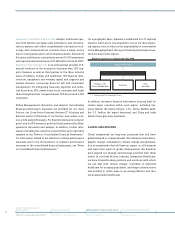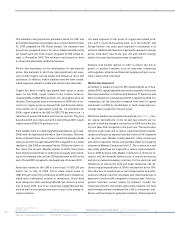Siemens 2009 Annual Report Download - page 142
Download and view the complete annual report
Please find page 142 of the 2009 Siemens annual report below. You can navigate through the pages in the report by either clicking on the pages listed below, or by using the keyword search tool below to find specific information within the annual report.-
 1
1 -
 2
2 -
 3
3 -
 4
4 -
 5
5 -
 6
6 -
 7
7 -
 8
8 -
 9
9 -
 10
10 -
 11
11 -
 12
12 -
 13
13 -
 14
14 -
 15
15 -
 16
16 -
 17
17 -
 18
18 -
 19
19 -
 20
20 -
 21
21 -
 22
22 -
 23
23 -
 24
24 -
 25
25 -
 26
26 -
 27
27 -
 28
28 -
 29
29 -
 30
30 -
 31
31 -
 32
32 -
 33
33 -
 34
34 -
 35
35 -
 36
36 -
 37
37 -
 38
38 -
 39
39 -
 40
40 -
 41
41 -
 42
42 -
 43
43 -
 44
44 -
 45
45 -
 46
46 -
 47
47 -
 48
48 -
 49
49 -
 50
50 -
 51
51 -
 52
52 -
 53
53 -
 54
54 -
 55
55 -
 56
56 -
 57
57 -
 58
58 -
 59
59 -
 60
60 -
 61
61 -
 62
62 -
 63
63 -
 64
64 -
 65
65 -
 66
66 -
 67
67 -
 68
68 -
 69
69 -
 70
70 -
 71
71 -
 72
72 -
 73
73 -
 74
74 -
 75
75 -
 76
76 -
 77
77 -
 78
78 -
 79
79 -
 80
80 -
 81
81 -
 82
82 -
 83
83 -
 84
84 -
 85
85 -
 86
86 -
 87
87 -
 88
88 -
 89
89 -
 90
90 -
 91
91 -
 92
92 -
 93
93 -
 94
94 -
 95
95 -
 96
96 -
 97
97 -
 98
98 -
 99
99 -
 100
100 -
 101
101 -
 102
102 -
 103
103 -
 104
104 -
 105
105 -
 106
106 -
 107
107 -
 108
108 -
 109
109 -
 110
110 -
 111
111 -
 112
112 -
 113
113 -
 114
114 -
 115
115 -
 116
116 -
 117
117 -
 118
118 -
 119
119 -
 120
120 -
 121
121 -
 122
122 -
 123
123 -
 124
124 -
 125
125 -
 126
126 -
 127
127 -
 128
128 -
 129
129 -
 130
130 -
 131
131 -
 132
132 -
 133
133 -
 134
134 -
 135
135 -
 136
136 -
 137
137 -
 138
138 -
 139
139 -
 140
140 -
 141
141 -
 142
142 -
 143
143 -
 144
144 -
 145
145 -
 146
146 -
 147
147 -
 148
148 -
 149
149 -
 150
150 -
 151
151 -
 152
152 -
 153
153 -
 154
154 -
 155
155 -
 156
156 -
 157
157 -
 158
158 -
 159
159 -
 160
160 -
 161
161 -
 162
162 -
 163
163 -
 164
164 -
 165
165 -
 166
166 -
 167
167 -
 168
168 -
 169
169 -
 170
170 -
 171
171 -
 172
172 -
 173
173 -
 174
174 -
 175
175 -
 176
176 -
 177
177 -
 178
178 -
 179
179 -
 180
180 -
 181
181 -
 182
182 -
 183
183 -
 184
184 -
 185
185 -
 186
186 -
 187
187 -
 188
188 -
 189
189 -
 190
190 -
 191
191 -
 192
192 -
 193
193 -
 194
194 -
 195
195 -
 196
196 -
 197
197 -
 198
198 -
 199
199 -
 200
200 -
 201
201 -
 202
202 -
 203
203 -
 204
204 -
 205
205 -
 206
206 -
 207
207 -
 208
208 -
 209
209 -
 210
210 -
 211
211 -
 212
212 -
 213
213 -
 214
214 -
 215
215 -
 216
216 -
 217
217 -
 218
218 -
 219
219 -
 220
220 -
 221
221 -
 222
222 -
 223
223 -
 224
224 -
 225
225 -
 226
226 -
 227
227 -
 228
228 -
 229
229 -
 230
230 -
 231
231 -
 232
232 -
 233
233 -
 234
234 -
 235
235 -
 236
236 -
 237
237 -
 238
238 -
 239
239 -
 240
240 -
 241
241 -
 242
242 -
 243
243 -
 244
244 -
 245
245 -
 246
246 -
 247
247 -
 248
248 -
 249
249 -
 250
250 -
 251
251 -
 252
252 -
 253
253 -
 254
254 -
 255
255 -
 256
256 -
 257
257 -
 258
258 -
 259
259 -
 260
260 -
 261
261 -
 262
262 -
 263
263 -
 264
264 -
 265
265 -
 266
266 -
 267
267 -
 268
268 -
 269
269 -
 270
270 -
 271
271 -
 272
272 -
 273
273 -
 274
274 -
 275
275 -
 276
276 -
 277
277 -
 278
278 -
 279
279 -
 280
280 -
 281
281 -
 282
282 -
 283
283 -
 284
284 -
 285
285 -
 286
286 -
 287
287 -
 288
288 -
 289
289 -
 290
290 -
 291
291 -
 292
292 -
 293
293 -
 294
294 -
 295
295 -
 296
296 -
 297
297 -
 298
298 -
 299
299 -
 300
300 -
 301
301 -
 302
302 -
 303
303 -
 304
304 -
 305
305 -
 306
306 -
 307
307 -
 308
308 -
 309
309 -
 310
310 -
 311
311 -
 312
312 -
 313
313 -
 314
314 -
 315
315 -
 316
316 -
 317
317 -
 318
318 -
 319
319 -
 320
320 -
 321
321 -
 322
322
 |
 |

4
Reports Supervisory Board /
Managing Board Corporate Governance Management’s discussion and analysis Consolidated Financial Statements
44 Business and operating environment 63 Fiscal 2009 – Financial summary 66 Results of operations 84 Financial position
profit for these businesses is defined as earnings before
financing interest, certain pension costs, and income taxes,
and also may exclude various categories of items, which are
not allocated to these businesses since Management does not
regard such items as indicative of their performance. In fiscal
2009, profit of the Diagnostics Division and the Healthcare
Sector is adjusted for purchase price accounting (PPA) effects
and integration costs for comparison with the margin ranges.
In contrast, and in line with common practice in the financial
services industry, the profitability measure for SFS is return on
equity, defined as Income before income taxes divided by the
average allocated equity for SFS. Our target ranges and the fis-
cal 2009 performances of our Sectors, Divisions and Cross-
Sector Businesses, are shown below.
Operational performance measures
The first of our operational performance measures focuses on
growth, in order to ensure the revenue development required
to produce income growth. Our goal for the current fiscal year
was to grow annual organic revenue at twice the rate of global
GDP growth. In case of negative GDP growth, this means that a
percentage decline in annual organic revenue for Siemens was
targeted at less than half the rate of decline in global GDP.
Our primary measure for the conversion of revenue growth to
income growth is profit margin, applied and reported at the
Sector, Division and Cross-Sector Business level. For our Sec-
tors, Divisions and for Siemens IT Solutions and Services, profit
margin is calculated as the ratio of profit to revenue, while
Growth
Value Generation
Liquidity
Profitability/
Capital
efficiency
B25G007_E
Revenue growth
FY 2009 0%
FY 2008 9%
Target 2009: < 0.5 GDP decline. As of October 14, 2009, IHS Global Insight Inc. expects
negative growth of 2.1% in GDP in 2009.
1 Excluding currency translation and portfolio effects.
Revenue current period1
– 1 × 100%
Revenue prior-year period
B25G008_E
Profit margin fiscal year
Margin Target
range
Industry 7.7% 9 – 13%
Industry Automation 9.1% 12 – 17%
Drive Technologies 11.1% 11 – 16%
Building Technologies 6.4% 7 – 10%
OSRAM 2.2% 10 – 12%
Industry Solutions 5.3% 5 – 7%
Mobility 6.1% 5 – 7%
Energy 12.9% 11 – 15%
Fossil Power Generation 13.0% 11 – 15%
Renewable Energy 13.0% 12 – 16%
Oil & Gas 11.7% 10 – 14%
Power Transmission 11.7% 10 – 14%
Power Distribution 13.2% 11 – 15%
Healthcare 14.2% 14 – 17%
Imaging & IT 16.2% 14 – 17%
Workflow & Solutions (3.5)% 11 – 14%
Diagnostics 16.8% 16 – 19%
Siemens IT Solutions
and Services 1.9% 5 – 7%
Siemens Financial
Services 25.9% 20 – 23%
Target range
1 Profit margin including PPA effects and integration costs for Healthcare is 12.2%
and for Diagnostics 9.7%.
2 Return on equity.
Profit
× 100%
Revenue
B25G009_E
